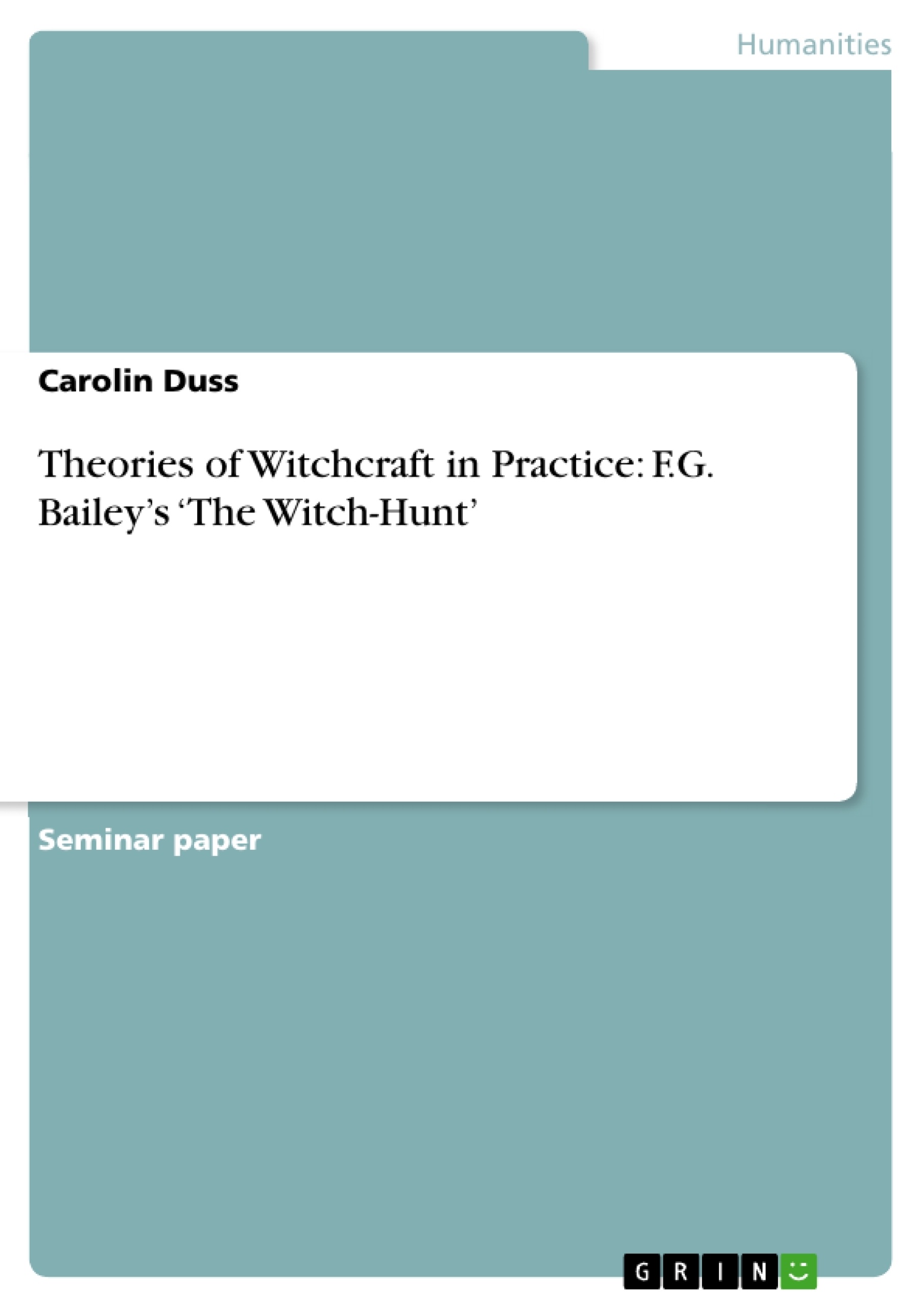To most people growing up in a Western cultural setting, magic, sorcery and witchcraft hold a certain fascination. There always seems to be something mysterious, extraordinary, even risky to the named issues, probably because we just don’t face them in everyday life.
Anthropology shares this fascination for the following reasons: “cross-cultural prevalence, frequent cultural prominence, paradoxical attributes, no doubt the attraction of the exotic, and the potential for testing theories about belief and social action” (Levine 1982: 259). In this paper, I will focus mainly on the subject of witchcraft without disregarding important links to magic and sorcery. Central questions are: What is witchcraft? Under what circumstances does witchcraft appear? Why do people accuse others of it or confess to witchcraft themselves? How does witchcraft relate to the social structure, economics, politics and personal affairs of the members of a society?
There have been different answers to those questions since the first papers on magic, sorcery, and witchcraft have been written in the late 19th and early 20th century. In chapter 2, I will therefore present a historical overview of the most important approaches in general which are also especially important for this study. Theories by Frazer, Tylor, Malinowski, Evans- Pritchard and Douglas will be sketched out. Beforehand I will try to discern the concepts of magic, witchcraft and sorcery in chapter 1 and name their most important aspects. This differ-entiation is important to do, since the meanings of the named terms have changed over the decades and there is still a bit of disaccord or confusion in the use and understanding of them today. In chapter 3, I will give a résumé of the monography 'The Witch-Hunt; or: a Triumph of Morality' by F.G. Bailey which is based on his fieldwork in an Indian village in 1953. He uses several anthropological approaches to explain and interpret the exceptional events that have taken place, drawing on functional, structural and psychological theories. Also in chapter 3, I will point out how Bailey provides empiric examples for theories stated by great anthropolo- gists over the decades. Lastly, I will draw a conclusion and try to answer the questions I posed above.
Inhaltsverzeichnis (Table of Contents)
- Introduction
- 'Magic', 'Sorcery', and 'Witchcraft': Definitions and Concepts
- 1.1 'Magic'
- 1.2 'Sorcery' and 'Witchcraft'
- Historical Overview of Theories on Magic, Sorcery and Witchcraft
- Theories in Practice: F.G. Bailey's “The Witch-Hunt”
- 3.1 The Setting
- 3.2 The Witch-Hunt: the Events
- 3.3 The Witch-Hunt: Interpretations
- Conclusion
- References
Zielsetzung und Themenschwerpunkte (Objectives and Key Themes)
This paper focuses on the anthropological understanding of witchcraft, while acknowledging its connections to magic and sorcery. It investigates the nature of witchcraft, its emergence in specific social contexts, and its influence on social structures, economics, politics, and personal lives. The paper also examines how different theories have explained witchcraft and its role in society. The aim is to explore the complex and multifaceted nature of witchcraft, drawing upon historical perspectives and empirical case studies.
- Definitions and conceptual distinctions of 'magic,' 'sorcery,' and 'witchcraft'
- Historical overview of prominent theories on magic, sorcery, and witchcraft
- Analysis of F.G. Bailey's "The Witch-Hunt" and its application of anthropological theories
- The relationship between witchcraft and social structures, economics, and politics
- The role of rationality and irrationality in understanding witchcraft beliefs and practices
Zusammenfassung der Kapitel (Chapter Summaries)
The introduction sets the stage by exploring the fascination with magic, sorcery, and witchcraft in Western cultures and highlighting the anthropological interest in these topics. It introduces the central questions addressed in the paper, including the nature of witchcraft, its prevalence, and its impact on society.
Chapter 1 delves into the definitions and concepts of 'magic,' 'sorcery,' and 'witchcraft,' acknowledging the cultural specificity of these terms and the challenges of providing universal definitions. It explores the various interpretations of magic and its relationship to science and rationality, drawing attention to the cultural context of these concepts.
Chapter 2 presents a historical overview of prominent anthropological theories on magic, sorcery, and witchcraft. It examines the contributions of figures such as Frazer, Tylor, Malinowski, Evans-Pritchard, and Douglas, outlining their different approaches to understanding these phenomena.
Chapter 3, focused on F.G. Bailey's "The Witch-Hunt," provides a detailed analysis of his ethnographic study of a witch-hunt in an Indian village. It explores Bailey's application of functional, structural, and psychological theories to explain the events and their interpretations. This chapter demonstrates how anthropological theories can be applied to real-world situations.
Schlüsselwörter (Keywords)
The paper focuses on key concepts like magic, sorcery, witchcraft, anthropology, social structure, economics, politics, rationality, irrationality, cultural context, and ethnographic case studies. It explores theoretical perspectives from figures such as Frazer, Tylor, Malinowski, Evans-Pritchard, and Douglas, highlighting the work of F.G. Bailey and his study "The Witch-Hunt."
- Arbeit zitieren
- Carolin Duss (Autor:in), 2007, Theories of Witchcraft in Practice: F.G. Bailey’s ‘The Witch-Hunt’, München, GRIN Verlag, https://www.grin.com/document/145744



